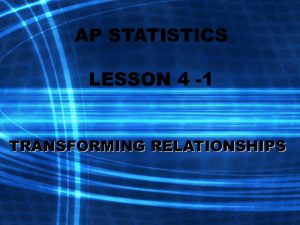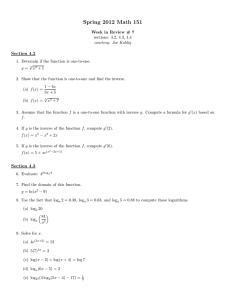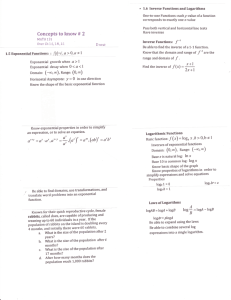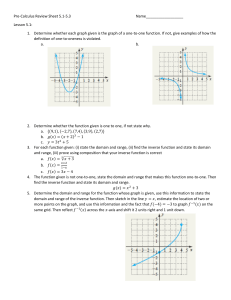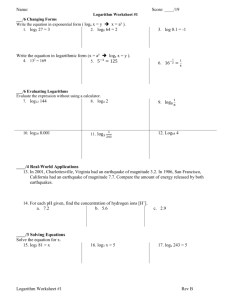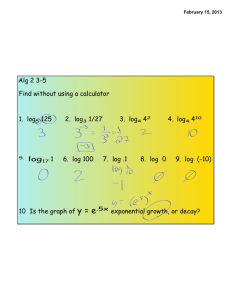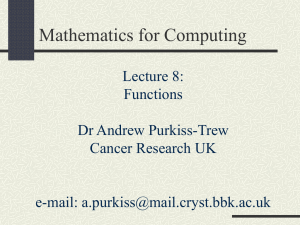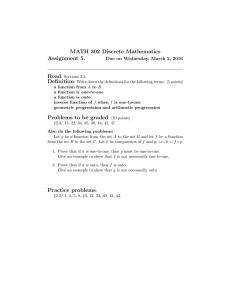Section 1.2: Elementary Functions
advertisement
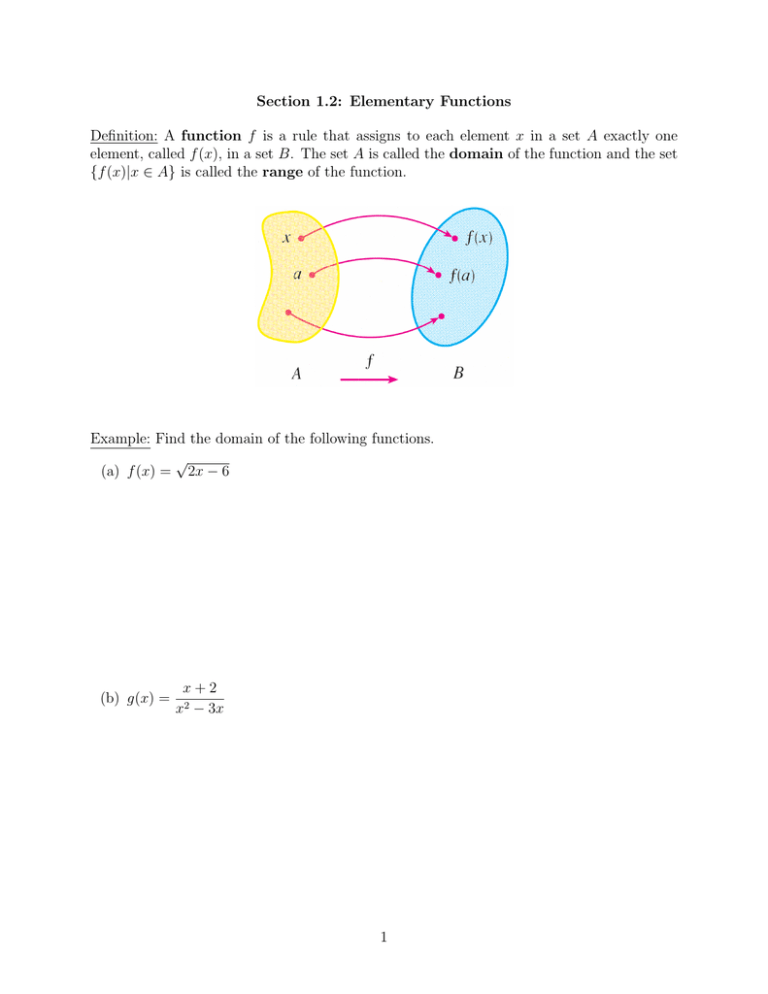
Section 1.2: Elementary Functions
Definition: A function f is a rule that assigns to each element x in a set A exactly one
element, called f (x), in a set B. The set A is called the domain of the function and the set
{f (x)|x ∈ A} is called the range of the function.
Example: Find the domain of the following functions.
√
(a) f (x) = 2x − 6
(b) g(x) =
x+2
x2 − 3x
1
Definition: Given two functions f and g, the composite function f ◦ g is defined by
(f ◦ g)(x) = f (g(x)).
The domain of the composite function f ◦ g is the set of all x in the domain of g such that
g(x) is in the domain of f .
𝑓∘𝑔
𝑥
𝑔
𝑔 𝑥
𝑓
𝑓 𝑔 𝑥
Example: If f (x) = 1 − x2 and g(x) = 2x, find the composite functions f ◦ g and g ◦ f and
state their domains.
Example: If f (x) = 3x2 and g(x) =
state their domains.
√
x, find the composite functions f ◦ g and g ◦ f and
2
Definition: An exponential function is a function of the form f (x) = ax where a 6= 1 is
a positive constant called the base of f and x is a real variable called the exponent of f .
The domain of any exponential function is R = (−∞, ∞) and the range is (0, ∞).
Note: If 0 < a < 1, then f (x) = ax is decreasing and if a > 1, then f (x) = ax is increasing.
Inverse Functions
Definition: A function f with domain A is called one-to-one if no two elements of A have
the same image. That is, if x1 6= x2 , then f (x1 ) 6= f (x2 ). Equivalently,
f (x1 ) = f (x2 ) implies x1 = x2 .
For example, f (x) = x2 is not one-to-one since f (2) = f (−2) = 4, but −2 6= 2.
Theorem: (Horizontal Line Test)
A function f is one-to-one if and only if no horizontal line intersects the graph of y = f (x)
more than once.
3
Example: Determine whether each of the following functions is one-to-one.
(a) f (x) = x2 − 2x + 5
(b) f (x) =
x−3
x+3
Definition: Let f be a one-to-one function with domain A and range B. Then its inverse
function f −1 has domain B and range A and is defined by
f −1 (y) = x ⇐⇒ f (x) = y for any y in B.
By definition, the inverse function satisfies
f −1 (f (x)) = x = f (f −1 (x)).
4
How to Find the Inverse of a One-to-One Function:
Suppose that f is a one-to-one function.
1. Let y = f (x).
2. Interchange x and y.
3. Solve this equation for y. The solution is y = f −1 (x).
Example: Find the inverse of the following functions.
(a) f (x) = 2x − 3
(b) g(x) =
√
4 − 2x
(c) f (x) = 2x
5
Logarithms
Definition: If a > 0 and a 6= 1, the exponential function f (x) = ax is one-to-one. Therefore,
it has an inverse function f −1 , called the logarithmic function with base a, denoted by
f (x) = loga x.
The domain of loga x is (0, ∞) and the range is R = (−∞, ∞).
Note: If 0 < a < 1, then loga x is decreasing and if a > 1, then loga x is increasing.
Note: Since exponentials and logarithms are inverses,
loga (ax ) = x
and
Example: Simplify the following expressions.
(a) 34 log3 x
6
aloga x = x.
(b) log2 16x
(c) 4−2 log2 x
Example: Solve the following expressions for x.
(a) e3x−1 = 2
(b) ln(2x − 3) = 0
7
(c) log3 x2 − log3 2x = 2
Theorem: (Change of Base Formulas)
Any exponential function with base a can be written as an exponential function with base e
ax = ex ln a .
Similarly, any logarithmic function with base a can be written in terms of the natural logarithm
ln x
.
loga x =
ln a
Example: Write the following expressions in terms of base e.
(a) 4x
2 −1
(b) log3 (5x + 1)
8
Exponential Growth and Decay
Theorem: (Exponential Growth and Decay)
Bacterial growth and radioactive decay are often modeled by the equation
y(t) = y0 ekt ,
where y0 = y(0) is the initial population or quantity. If k > 0, then k is called the growth
rate and if k < 0, then k is called the decay rate.
Example: After 5 days, a particular radioactive substance decays to 37% of its original
amount. Find the decay rate of the substance.
Example: How long (in hours) will it take a certain population of bacteria to triple if its
growth rate is 2?
9
Example: The half-life of C14 is 5730 years. If a sample of C14 has a mass of 20 micrograms,
how much is left after 1000 years?
10
